March Madness 2021: What to know about every team in the NCAA tournament bracket
From Gonzaga to Mount St. Mary’s, here’s your brief look at every team appearing in the 2021 men’s NCAA tournament field….
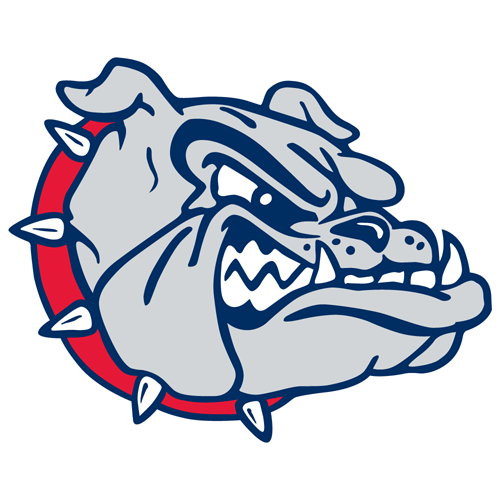
Now that the 2021 men’s NCAA tournament field is set, you’ll need the right information to make the right picks in your March Madness bracket. We’re here to help with our annual 68-team preview. The tournament will tip off on Thursday with the First Four, while the first round begins Friday. All games will be played in the state of Indiana, culminating with the Final Four at Lucas Oil Stadium on April 3 and 5. Visit this link for the complete 2021 NCAA tournament schedule. For a list of the 31 automatic bids that have reached March Madness, visit ESPN’s “tickets punched” page.
Here’s a brief look at every team in the field:
1-seeds

This might be the best team Mark Few has ever coached. Yes, that’s a strong statement about a program that had first-round picks Rui Hachimura and Brandon Clarke on the same team in 2018-19, two seasons after losing to North Carolina in the national title game in 2017, but the Bulldogs have never had a group with this volume of talent, depth and efficiency (52% clip against man, 61% against zone, per Synergy Sports data).
Jalen Suggs (14.3 PPG, 5.5 RPG, 4.5 APG, 2.0 SPG) is a projected top-five pick, and he can be the best player on the floor whenever he wants to be. Corey Kispert, the West Coast Conference Player of the Year who has made 44% of his 3-point attempts, is also a projected lottery pick in ESPN’s latest NBA mock draft. Drew Timme would be the No. 1 player for 90% of the teams in the country. And Florida transfer Andrew Nembhard leads a strong collection of reserves who have helped this team beat Power 5 opponents such as Kansas, West Virginia, Virginia and Iowa. The undefeated No. 1 overall seed has a legitimate shot at the first perfect season since Indiana’s run in 1976.
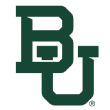
You could make the case that no coach has ever inherited a situation worse than the chaos Scott Drew had to face when he took over a Baylor program in 2003 that had dealt with a murder, improper payments and severe NCAA sanctions. Since then, he has turned Baylor into a perennial contender. Last season, Baylor won 23 in a row during a significant stretch. This season, its one regular-season loss was at Kansas days after the team had returned from a three-week pause.
Jared Butler (17.1 PPG, 5.0 APG, 2.1 SPG, 44% from the 3-point line) and Davion Mitchell (13.8 PPG) are projected first-round picks per ESPN’s latest NBA mock draft. MaCio Teague is averaging 15.8 PPG and connecting on nearly 40% of his 3-point attempts. The Bears lead the nation with a 43% clip from 3. And they force turnovers on nearly one-fifth of their opponents’ possessions. After the 83-74 loss to Oklahoma State in the Big 12 tournament semifinals, however, it’s fair to ask if this Baylor group still owns the Teflon defense the program enjoyed prior to its lengthy pause.
3:35
The South Region is revealed with Baylor, Ohio State, Arkansas and Purdue as the top seeds.

During a three-game stretch late in the season, Illinois beat Nebraska, Wisconsin and Michigan — the latter by 23 points in Ann Arbor. Ayo Dosunmu (20.9 PPG, 6. 2 RPG, 5.2 APG, 1.1 SPG, 40% from the 3-point line), the Wooden Award contender and NBA prospect, did not play in those games. Illinois weathered late-season drama without its star, but now that Dosunmu has returned, the Big Ten tournament champion Illini possess the talent and depth to handle any team in the field. Kofi Cockburn made 66.4% of his shots inside the arc during Big Ten play, the top mark in the league. But the emergence of freshman Andre Curbelo, who averaged 15.7 PPG in his last four regular-season games, has only enhanced this program’s potential. It has been 16 years since Illinois lost to North Carolina in the national title game in 2005, but this group has a chance to make a similar run.
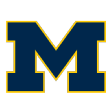
When athletic director Warde Manuel introduced Juwan Howard as the team’s new head coach in 2019, the former Fab Five star stood at the podium and cried before uttering one word: “Wow.” That’s also how Wolverines fans have felt this season, while watching a team that could capture its first national championship since Glen Rice led the program to a title in 1989. Once you get past what feels like a weird outlier — a 75-57 loss at Minnesota in January — you see a team with the talent, balance and poise to make a run in the Indianapolis bubble.
Michigan and freshman Hunter Dickinson are proof that a modern college team can still thrive around a big man. Entering the postseason, Michigan had averaged 112 points per 100 possessions (54% from inside the arc, 42% from the 3-point line) while holding its opponents to a 39% clip inside the arc with Dickinson on the floor, per hooplens.com. Despite a strong recovery after a long pause, however, devastating news could change things. If Isaiah Livers (13.1 PPG, 6.0 RPG, 43% from the 3-point line), who missed Saturday’s Big Ten semifinal matchup against Ohio State due to a foot injury, is unavailable, this will not be the same team, and those Final Four dreams will face a significant hurdle.
2-seeds
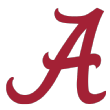
If you were flipping through games this season and stumbled onto a matchup involving Alabama, you might have seen Nate Oats’ squad put together a great come-from-behind rally. They seem comfortable in those moments. On Saturday, Alabama was down by 15 points before bouncing back to secure a 73-68 win over Tennessee in the SEC tournament semifinals. The Tide are a quandary for any opponent. With 6-foot-5 John Petty (12.7 PPG) and the versatile, 6-8 Herbert Jones (10.8 PPG, 6.1 RPG), the SEC player of the year, Alabama can play small ball and use its top-10 tempo to beat teams in transition. But that speed doesn’t result in chaos. Alabama made 38% of its 3-point attempts in league play and maintained the SEC’s most efficient defense, too. It won the SEC regular season and tournament titles and has lost just one game — an 81-66 road loss to Arkansas on Feb. 24 — since Feb. 6.
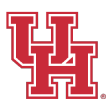
Caleb Mills, the team’s top scorer last season, transferred after playing in four games. Nate Hinton, the No. 3 scorer from a season ago, turned pro. Fabian White, fourth in scoring in 2019-20, suffered a torn ACL before the season and missed 19 games before returning Feb. 18 against Wichita State. Still, Kelvin Sampson’s team locked up a top-two seed after powering through the American Athletic Conference tournament with just three losses, relying on a hard-nosed brand of basketball from a group that’s a bully when it has to be. But this isn’t ugly basketball. The Cougars finished the regular season ranked in the top 10 in adjusted offensive and defensive efficiency per KenPom. And Quentin Grimes, a former five-star recruit at Kansas, played like an All-American.

The good news for Fran McCaffery’s crew is that Iowa played some of its best basketball in the final weeks of the season. The Hawkeyes finished 7-1 in their last eight games of the Big Ten season, a stretch that included a sweep of Wisconsin and a road win over Ohio State. The other positive development is that Luka Garza (23.8 PPG, 8.7 RPG, 1.6 BPG), the Wooden Award favorite throughout the season, is the star of their show. He finished second to Obi Toppin in the race for the honor last season, but he’s more efficient at the 3-point line (43%) and the charity stripe (71%) this season. The bad news? The injury bug has arrived: Jack Nunge (7.1 PPG) is out for the season. But that just means Joe Wieskamp (15.0 PPG, 6.6 RPG) & Co. have to play at a higher level, which they did throughout the Big Ten tournament.

Just after Ohio State rattled off road wins over Rutgers, Illinois, Wisconsin, Iowa and Maryland, the NCAA tournament selection announced its top 16 seeds through Feb. 12 and the Buckeyes had secured a No. 1 slot. But a four-game losing streak entering the Big Ten tournament ended that dream. Still, the run was proof that Chris Holtmann’s team could fight through a tough stretch and beat good teams outside Columbus, Ohio, the same task the Buckeyes accepted in their run to the Big Ten tournament title game, and the same one they’ll try to pull off in the NCAA tournament. Duane Washington (15.3 PPG) and E.J. Liddell (16.0 PPG), however, can’t do it alone. The Buckeyes will need better interior defense, a problem against the league’s top bigs, and consistency from Kyle Young, who scored 18 points in a February win over Maryland but didn’t record double-digit points again for a month after that effort.
3-seeds

After a 31-point road loss to Alabama on Jan. 16, Eric Musselman’s squad didn’t lose another SEC game in the regular season, turning a 2-4 start in league play into a 13-4 second-place finish. Their success this season is tied to an overlooked freshman who quickly evolved. Moses Moody (17.0 PPG, 5.8 RPG, 38% from the 3-point line), a projected lottery pick in ESPN’s latest NBA mock draft, has made 58% of his assisted spot-up attempts, per Synergy Sports data. And Arkansas has made 53% of its shots with Moody on the floor this season, per hooplens.com. He’s one of the four players averaging double figures for a program that had won nine in a row prior to Saturday’s loss to LSU in the SEC tournament semifinals.
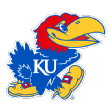
Back in January, Kansas didn’t look like a typical Kansas team. Bill Self had not yet found the right rotation and a team that had lost Devon Dotson and Udoka Azubuike from last season’s squad clearly hadn’t filled that void. But then February arrived and the Jayhawks seemed to make a conscious choice to use elite defense to pull them through the final stretch of the season and it worked. As it prepared for its matchup against Texas in the semifinals of the Big 12 tournament, Kansas had not surrendered more than one point per possession to an opponent since its 91-79 loss at West Virginia on Feb. 6. KU has gone 8-1 in the past nine games.
1:55
Kansas coach Bill Self provides an update on his team’s COVID-19 situation and when his full squad could be able to play in the tournament.
David McCormack, who averaged 16.7 PPG in his past four games, is expected to return for the NCAA tournament after missing the Big 12 tournament due to COVID-19 protocols. After Kansas left the Big 12 tournament following a positive test, however, it’s unclear how the team will be affected in the Indianapolis bubble.

Shaka Smart entered the season facing pressure as his search for an NCAA tournament victory during his tenure continues. But when it became clear that Texas would have no trouble earning a spot in the field, the chatter ended. That’s fitting for a program that swept Kansas in the regular season and gained momentum with a 8-2 rally over its last 10 and a Big 12 tournament championship. The backcourt is stacked with gamers: Courtney Ramey, Andrew Jones and Matt Coleman III. Greg Brown and Kai Jones are a pair of big men who are both projected first-round picks in ESPN’s latest mock draft, too. This group has the balance that North Carolina used to win the 2017 national title. Both teams made just over 35% of their 3-point attempts and more than 51% of their shots inside the arc.

Remember the Bob Huggins who used to attack teams with the “Press Virginia” style and make them unravel by halftime? Well, this isn’t that team. This season, West Virginia led the league in free throw rate (71% accuracy in Big 12 play) and was second overall in offensive efficiency. Derek Culver (14.6 PPG, 9.8 RPG) and Miles McBride (15.4 PPG) stabilized the Mountaineers after Oscar Tshiebwe transferred after playing just 10 games. But don’t forget Taz Sherman. West Virginia averaged 107 points per 100 possessions with the 6-4 guard on the floor and 97 points per 100 possessions without him.
4-seeds

Last season, Leonard Hamilton led his team to the ACC’s regular-season championship but never had an opportunity to go after his first national title because the NCAA tournament was canceled. This season, he molded the ACC’s most efficient offensive team (40.3% from the 3-point line in ACC play) along with a defense that led the league with a 45% clip inside the arc for opposing teams. Scottie Barnes, a projected lottery pick in ESPN’s latest mock draft, had recorded double digits in scoring in four of his last seven games in the regular season prior to the ACC tournament. He’s the No. 3 scorer behind RaiQuan Gray (12.4 PPG) and M.J. Walker (13.1 PP, 44% from the 3-point line).

Cade Cunningham (19.6 PPG, 6.4 RPG, 3.6 APG, 1.4 SPG, 41.2% from the 3-point line) is the projected No. 1 pick. He’s a freshman phenom. Oklahoma State will enter each game with the most talented player on the floor. Forget everything that happened in the first half of the season. Cunningham and Oklahoma State have played like a top seed and real contender in recent weeks, a run that has included victories over Texas and Texas Tech, a sweep of Oklahoma and two wins over West Virginia (one without Cunningham). All of that came before Oklahoma State’s win over eventual No. 1 seed Baylor in the Big 12 tournament semifinals on Friday. This run feels like the stretch UConn had with Kemba Walker in 2011 or maybe the magic that Syracuse found with Carmelo Anthony in 2003. The top of the bracket with Michigan, Illinois, Baylor and Gonzaga is strong. But Cunningham and Oklahoma State boast the talent to crash the party.
0:41
Joe Lunardi explains he is mostly pleased with the committee’s selection of the NCAA tournament, but sees Oklahoma State better than a 4-seed.

Matt Painter’s squad quietly finished top-five in offensive and defensive efficiency in Big Ten play, per KenPom. The Boilermakers also finished fourth — ahead of Ohio State and Wisconsin — in the Big Ten standings with a 13-6 record. Few teams in America can match Purdue’s frontcourt size with 6-foot-10 Trevion Williams (15.2 PPG, 8.8 RPG) and 7-foot-4 Zach Edey (8.9 PPG, 4.5 RPG) in the paint. It’s still unclear if the Boilermakers can hang with the top-tier teams in America — they lost to Illinois, Michigan and Iowa by 40 points combined — but their 6-1 finish in the regular season suggests Painter’s crew is improving.

The defending national champion secured the ACC’s regular-season title based on winning percentage with the league’s imbalanced schedule due to COVID-19. But the latter is also the reason the Cavs had to exit the ACC tournament after a positive test forced their withdrawal. At that point, Virginia’s season was in jeopardy, but the Cavs are here. This is another potentially exceptional and efficient Tony Bennett squad, one that made 39.1% of its 3-point attempts and finished second in defensive efficiency in league play. Marquette transfer Sam Hauser (15.8 PPG, 6.8 RPG, 44% from the 3-point line) and Jay Huff (13.1 PPG, 6.9 RPG, 2.5 BPG, 41% from the 3-point line) are tough players. But this team doesn’t have the level of talent that guided the program to its first national title two years ago, so it will have to do it with balance and depth.
5-seeds

Before his team faced Oregon State in the Pac-12 tournament final on Saturday, McKinley Wright IV had averaged 21 PPG over his past four games of a six-game Buffaloes winning streak. That run, much like his team’s overall success, has not been a major story in college basketball. Tad Boyle’s squad has lost just two games since Jan. 30. The Buffaloes didn’t pick up any major nonconference wins and the Pac-12 slate didn’t match what Big 12 and Big Ten teams faced this season, but they ranked in the top three in offensive and defensive efficiency in league play.
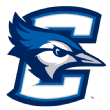
Everything seemed uncertain when Greg McDermott apologized for racially insensitive remarks he made after a recent game, subsequently earning a one-game suspension. With McDermott back for the postseason — even with the Bluejays’ run to the title game in the Big East tournament — the scrutiny around his comments could intensify the spotlight on the program. But the players who have gone through this adversity comprise an incredible group with an abundance of promise. It starts with Marcus Zegarowski (15.5 PPG, 41% from the 3-point line). He’s surrounded by a group that has made 57% of its assisted field goal attempts, an “excellent” mark per Synergy Sports data.

Earlier this season, Tennessee seemed to have everything a team would want to make a run. The Vols have reliable guard play, length and athleticism in the post and a seasoned coach in Rick Barnes. Since that 10-1 start (4-1 in SEC play), however, Tennessee has followed its good outings with subpar performances. The Vols went 8-7 in their final 15 games of the year. It’s the up-and-down play — the Vols lost to Alabama in the SEC tournament semifinals on Saturday after surrendering a 15-point lead — that makes Tennessee hard to assess. The unknown status of John Fulkerson (9.5 PPG, 5.5 RPG), who missed Saturday’s game after taking an elbow on Friday from Florida’s Omar Payne, doesn’t help. But there is enough talent to make Tennessee intriguing. The growth of freshman Keon Johnson is fun to watch. He’s made 58% of his shots at the rim, per hoop-math.com. The Vols also led the SEC in defensive turnover rate.

When Collin Gillespie couldn’t put any weight on his knee after going down during a game against Creighton earlier this month, suffering what would later be revealed as a season-ending knee injury, it changed the outlook for a good Villanova team. With Gillespie, the Wildcats forced turnovers on nearly one-fifth of their opponents’ possessions and committed turnovers on 13 out of every 100 trips up the floor. Those are remarkable numbers that speak to Gillespie’s role on this team. But the Wildcats also beat Creighton that night without his help for the bulk of the game. A team with Jeremiah Robinson-Earl (15.7 PPG, 8.3 RPG, co-Big East Player of the Year), Jermaine Samuels (11.8 PPG, 6.3 RPG) and a hopefully healthy Justin Moore (12.6 PPG), who has missed time recently with an ankle problem, is still a squad with second-weekend potential.
6-seeds

For one half in the West Coast Conference title game, BYU showed the world why it will not be a walkover for anyone it plays in the NCAA tournament. Handing Gonzaga its first double-digit halftime deficit of the season — the Cougars led by 12 — created serious doubt about Gonzaga’s ability to preserve its perfect season. It didn’t last, but there is nothing wrong with losing to Gonzaga. A BYU team that scored at a rate of 111 points per 100 possessions, led by 7-foot-3 Matt Haarms (13 points, 4 rebounds, 1 block) in the 88-78 loss to the No. 1 team in America, is a team that can be competitive in Indianapolis.

With a win over Utah State in Saturday’s Mountain West tournament title matchup, Brian Dutcher’s squad extended its winning streak to 14 games. His team scored 77 points or more in eight of those games. San Diego State also made 40% of its 3-point attempts in league play and was second only to Utah State in defensive efficiency. A pair of seniors, Matt Mitchell (15.4 PPG) and Jordan Schakel (14.5 PPG), carry the scoring load. So when you’re filling out your brackets, don’t forget about the West Coast team with veteran leadership and a hot streak that started two months ago.

While a portion of America was asleep this season, Evan Mobley was going to work on the West Coast. The freshman, the projected No. 2 pick in ESPN’s latest NBA mock draft, has been a force this season. The mobile 7-footer was averaging 16.4 PPG, 8.6 RPG, 2.1 APG and 2.9 BPG entering a Pac-12 tournament semifinal matchup against Colorado. With a frontcourt anchored by him and his brother, 6-10 Isaiah Mobley, opposing teams have made just 42.4% of their shots inside the arc against USC — a top-five mark nationally.

Chris Beard’s season has been defined by final-minute drama that, too often, has ended in his opponents’ favor. The program’s late collapse against Texas in the Big 12 tournament quarterfinals on Thursday was a microcosm of the entire season. Losses to Kansas (one point), Oklahoma State (twice, both in overtime) and West Virginia (one point) could have gone either way. That’s why this group is a great example of a team that’s probably better than its seed. Mac McClung (15.7 PPG), one of four scorers averaging double figures, can’t wait to get a shot at a non-Big 12 team.
7-seeds

Miami sent the Tigers home in the opening round of the ACC tournament on Wednesday, but the Tigers’ résumé was already solid. Nonconference wins over Purdue, Maryland and Alabama became more valuable as the season evolved. The team’s dream of a tournament run revolves around Aamir Simms (13.3 PPG, 6.2 RPG, 2.7 APG, 41% from the 3-point line), who has made 60.5% of his shots off pick-and-rolls, per Synergy Sports data.

Where is James Bouknight (19.4 PPG)? That’s the question opponents will be asking. If he’s on the floor, this is a different team. When he went down in the Big East tournament against DePaul on Thursday, fears returned, but per coach Dan Hurley, it was just cramps. Overall, the team was 5-1 after Bouknight’s return from an elbow injury entering the Big East tournament. But that win over DePaul also showcased this group’s depth. Four players scored nine points or more in that matchup. Bouknight’s health has been at the center of the narrative this season, but UConn at full strength is a handful.

It has been an unprecedented season for every team in America, but the Gators endured the unimaginable when Keyontae Johnson collapsed during a game against rival Florida State in December. Johnson is back on the sideline but not playing. Tre Mann (16.0 PPG, 5.7 RPG, 2.4 APG 1.5 SPG, 40% from the 3-point line) has done his part to keep this team together and lead on the floor, too. Per Synergy Sports data, he’s made 49% of his shots off screens. The Gators led the SEC with a 53% clip inside the arc in league play, too. A 1-3 stretch entering the NCAA tournament is what the team has to put behind it. Wins over West Virginia, Tennessee and LSU showcased this team’s ceiling.

Dana Altman’s squad has endured a long pause and multiple injuries. N’Faly Dante (8.2 PPG) suffered a torn ACL in December and Will Richardson (11.5 PPG) missed a significant stretch with a hand injury. But a now-healthy Oregon team has five players — Eugene Omoruyi (16.8 PPG), Chris Duarte (16.8 PPG), LJ Figueroa (12.2 PPG), Eric Williams Jr. (10.4 PPG) and Richardson — who are all averaging double figures and connecting on at least 36% of their 3-point attempts for the Pac-12 regular-season champ.
8-seeds

Sister Jean is back! In 2018, the Ramblers made a run to the Final Four, putting the entire school on the national radar. The 2020-21 version is an equally capable sleeper in this field. Cameron Krutwig, a freshman standout on that Final Four team, has played like an All-American after averaging 15.0 PPG, 6.7 RPG, 3.0 APG, 1.2 BPG, 1.1 SPG. The Ramblers boast the most efficient defense in the country and they’ve made 58% of their shots inside the arc — better marks than the team that reached the 2018 Final Four in both categories.

Arkansas had won nine in a row before suffering a 79-71 loss to LSU in the SEC tournament semifinals Saturday. The Tigers used the same formula that makes them a threat to advance to the second weekend. Cam Thomas scored 21 points — his 20th game with 20 or more points this season — and his team forced 16 turnovers, a sign of an improving defense. At one point in the second half of the win over Arkansas on Saturday, LSU had put together a 17-2 run against the hottest team in the SEC. No. 1 in offensive efficiency in SEC play per KenPom, LSU can put up big numbers, and if it’s respectable on defense throughout the NCAA tournament, it can be a team that can compete with the best squads in the field.

Nothing seemed guaranteed for a Tar Heels team that tumbled through this unprecedented season. This isn’t a North Carolina squad with the elite talent pool the program has enjoyed during its most memorable runs under Roy Williams. But the formula remains. The Tar Heels are going to protect the rim with their big bodies, run the floor with their athletic guards and rely on second-chance opportunities as the nation’s best offensive rebounding team. The weaknesses on this roster (31% clip from the 3-point line) are clear, but Garrison Brooks will lead a UNC frontcourt that will also throw 6-foot-11 Day’Ron Sharpe and 6-10 Armando Bacot at opposing teams and hope for the best.

OU’s Lon Kruger joins Tubby Smith as one of two coaches who’ve led five different programs to the NCAA tournament. That demands an adaptability that Kruger displayed with an Oklahoma team that beat Kansas, swept West Virginia and bested Alabama in the Big 12/SEC Challenge. Austin Reaves (17.7 PPG, 5.7 RPG, 4.7 APG) is a star, but 6-foot-9 Brady Manek finding his rhythm from the perimeter — he has made 36% of his 3-point attempts overall but only 31% of those shots in league action — will create space for everyone on the floor.
9-seeds
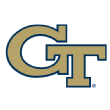
There was a scary moment in Georgia Tech’s 70-66 win over Miami in the ACC tournament on Thursday when Jose Alvarado (15.5 PPG, 4.2 APG, 2.9 SPG, 41% from the 3-point line) fell to the ground with an apparent leg injury. But he returned, and the Yellow Jackets — backed by Alvarado and ACC Player of the Year Moses Wright (18.0 PPG, 8.1 RPG) — extended their winning streak to eight games after rolling all the way through to the ACC tournament title with a victory over Florida State. Josh Pastner’s squad got hot down the stretch and will enter the field as an intriguing team.
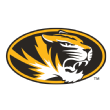
Missouri’s résumé largely hinged on big nonconference wins — Oregon, Wichita State and Illinois — to overcome a rocky finish in SEC action. After a 68-65 win over Alabama on Feb. 6, the team recorded a 3-6 record in its nine games prior to the NCAA tournament. In four of those losses, Missouri gave up 80 points or more. The Tigers have not been able to recapture the efficiency they used to pick up significant wins earlier in the season. Dru Smith (14.1 PPG) and Xavier Pinson (14.1 PPG) are key players for Cuonzo Martin’s squad. We know what the Tigers can do. The problem is they just haven’t done it recently. Their only wins since Feb. 6 have been against South Carolina, Florida and Georgia.

Mark Schmidt’s Atlantic 10 title-winning squad had the most efficient offense (38% clip from the 3-point line) and the most efficient defense (45% inside the arc allowed) in Atlantic 10 play. He also has two of America’s best players. When Kyle Lofton (14.2 PPG, 5.5 APG) and Osun Osunniyi (10.3 PPG, 9.3 RPG, 2.8 BPG) have been on the floor together this season, the Bonnies have made 40% of their 3-point attempts versus 34% without them.

A 2-6 finish in Wisconsin’s last eight games didn’t do much for its profile, but those losses also came against Iowa (three times), Illinois, Michigan and Purdue. Still, Wisconsin didn’t look like the same team that beat Loyola Chicago, Louisville and Maryland prior to that late slide. So who are the Badgers? They have the lowest turnover rate in America. They’re led by seniors D’Mitrik Trice (13.7 PPG), Micah Potter (12.9 PPG) and Brad Davison (9.2 PPG). They also made just 32.7% of their 3-point attempts in league play. The Badgers are a beautiful mystery.
10-seeds
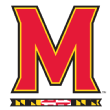
The picture that pops up when you Google “being good enough in a great league”? That’s Maryland. While its résumé is bolstered by road wins over Illinois and Wisconsin, its convincing performances were minimal. Beyond those two gems, Maryland largely beat the teams it had to beat to get into the field, but the Terps also finished 11th in offensive efficiency in league play on KenPom. They got swept by Penn State and lost to Northwestern. Aaron Wiggins (14.5 PPG) and Eric Ayala (14.0 PPG), however, might excel once they face teams outside the strongest conference in America.

Rutgers isn’t on a roller coaster — the Scarlet Knights have been aboard a cruise ship on choppy waters in the open sea all season. The team started 7-1 (including wins over Purdue, Syracuse, Maryland and Illinois). Then the Knights lost five in row before finishing the regular season with an apropos 3-4 tally in their last seven games prior to the Big Ten tournament. A 31.4% clip from the 3-point line won’t help them recover from any deep deficits. But Geo Baker, Ron Harper and Jacob Young are all capable athletes with this squad.

Maybe you haven’t heard of Nah’Shon Hyland (19.4 PPG, 4.7 RPG, 2.0 SPG, 37% from the 3-point line), the Atlantic 10 Player of the Year. That could change soon if VCU’s bubbly journey to the field of 68 includes a win or two. A top-10 mark in defensive efficiency, however, might not be enough to overcome this group’s knack for committing turnovers. The Rams finished with a 7-2 record in their last nine regular-season games before the Atlantic 10 tournament. They can defend, they have a legit star in Hyland and they have regained their rhythm in time for the postseason.

Mike Young won ACC Coach of the Year honors after enduring opt-outs, off-court issues, injuries and a three-week pause this season. Weathering adversity, Virginia Tech beat Villanova in the nonconference season before finishing 9-4 in league play. During the regular season, Virginia Tech made 52% of its shots inside the arc with Keve Aluma (15.9 PPG, 8.0 RPG, 1.4 BPG) on the floor, per hooplens.com.
11-seeds

After an 18-0 start (9-0 in the Missouri Valley Conference), Drake finished the season with a 7-4 record in its final 11 games. Leading scorer ShanQuan Hemphill (broken foot) missed three of those losses. Roman Penn (broken foot), the team’s No. 3 scorer, was out for two of them. Losing a pair of key players who combined to average 25.3 PPG only increased the pressure on Joseph Yesufu (12.1 PPG), who has logged at least 39 minutes in five consecutive games. But Hemphill could return for the NCAA tournament. That would help everyone.

The last time the Spartans missed the NCAA tournament, Tom Izzo was 42 years old and in his second season as Michigan State head coach. Morris Peterson and Mateen Cleaves were both freshmen. This was 1997, three years before Michigan State’s most recent — and the Big Ten’s last — national title run in 2000. It seemed as if Michigan State could be left out of the tournament with a team anchored more by blue-collar players such as Joey Hauser and Aaron Henry than the program’s many first-round prospects of the past. Then Michigan State beat Illinois, Ohio State and Michigan in the final month of the regular season, renewing its postseason hopes.

Jim Boeheim has spent part of his season trying to avoid going viral for the wrong reasons. But when he wasn’t making comments about Jalen Johnson’s decision to opt out at Duke or questioning a reporter’s basketball knowledge based on his height, he was doing what he usually does in March and leading a Syracuse team to the right side of the bubble. The Orange beat a soaring North Carolina squad on March 1, but they also were swept by Pitt this season. Buddy Boeheim (16.5 PPG) is one of four players on the roster averaging double figures.
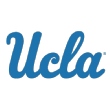
Things seemed dire when Chris Smith (12.6 PPG, 6.4 RPG) suffered a torn ACL on New Year’s Eve. But Mick Cronin’s club won six a row, displaying resilience and depth after losing a critical player. Unlike last season, when the Bruins finished 11-3 in their final 14 games, the magic didn’t last. A UCLA squad that started 8-0 in Pac-12 play finished 13-6 before losing to Oregon State in the quarterfinals of the Pac-12 tournament. But the Bruins led the Pac-12 with a 39% clip from the 3-point line in league play. And Kentucky transfer Johnny Juzang (14.0 PPG) has given UCLA a boost.

While a 68-57 loss to San Diego State in the Mountain West tournament title game ended a six-game winning streak for Utah State, Craig Smith’s squad held a powerful SDSU team to its lowest offensive efficiency in five games (1.06 PPP). The league’s most efficient defense held its Mountain West opponents to a 42.1% clip inside the arc, No. 1 in the conference. But center Neemias Queta (14.8 PPG, 10.0 RPG, 3.0 BPG) is the difference-maker for this team. When he’s on the floor, opposing teams have made under 40% of their shots inside the 3-point line. Those same teams have made 51% of those attempts with the 7-footer Queta on the bench.
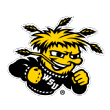
Gregg Marshall’s preseason departure after allegations of verbal and physical abuse opened the door for Isaac Brown, who won AAC Coach of the Year despite starting the season with the interim tag. Wichita State minimized turnovers and played hard, counting on guys such as Tyson Etienne (17.1 PPG, 40% from the 3-point line) to help the Shockers win the league’s title. They slid into the field, but they’ve already exceeded expectations. Can they do it again by winning a game?
12-seeds
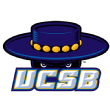
JaQuori McLaughlin is the 6-4 point guard and leader of this group. He has made 39% of 3-point attempts and averaged 16.2 PPG for a team that has lost one game since Dec. 28. He has also helped this team control the ball (17% offensive turnover rate) with a 2.5 assist-turnover ratio. The Gauchos have made 58% of their shots in transition, an “excellent” mark, per Synergy Sports data. Amadou Sow (13.7 PPG, 7.6 RPG) is a 6-9 big man who is critical to this operation, too.

When “Big” John Thompson, the legendary Georgetown coach, died in August, Patrick Ewing — who won a national title with his Hoyas in 1984 — reflected on “someone who I consider to be a father figure.” Ewing didn’t need a conversation with a search firm when he had an opportunity to leave the NBA and return to his alma mater. He just answered the phone. Thompson told his former pupil to take the job. To watch Ewing and his team celebrate a remarkable Big East tournament championship run on Saturday — the Hoyas were an 8-seed with no at-large hopes after finishing 9-12 in the regular season — was a special moment. The Hoyas beat Villanova and Creighton during their four-game trek to the conference tournament crown. We’ll see if Jahvon Blair (15.8 PPG on the season), Dante Harris (11.1 PPG in the Big East tournament) and their teammates can keep the magic going. Either way, this is one of the best stories in the NCAA tournament.

At some point, the Beavers have to miss, right? Outside shooting is how the Pac-12 afterthought stole a bid, powering through UCLA, Oregon and Colorado by connecting on 29-of-66 3-point attempts (44%) to win the Pac-12 tournament championship. Sometimes it’s dangerous to put too much value on a late-season turn. During the regular season, Oregon State made 33% of its 3-point attempts in league play. It has losses to Washington State, Wyoming and Portland on its résumé. But Wayne Tinkle’s crew is also 6-1 in its last seven games, and maybe they’re just getting hot at the perfect time.

Pat Kelsey’s program is just one rocky finish against UNC Asheville on Jan. 29 from entering the NCAA tournament with a perfect record. The one-loss Eagles play at a fast pace, but they still owned the most efficient offense and defense in the Big South. Their top scorers this season belong on the tournament’s all-name squad. But reserves Adonis Arms (10.5 PPG) and Chandler Vaudrin (12.2 PPG, 7.2 RPG, 6.9 APG, 1.3 SPG, 38% from the 3-point line) could go viral soon with big performances.
13-seeds

Ritchie McKay’s squad is 15-1 in its past 16 games, a strong run for the Atlantic Sun regular-season and tournament champions. The Flames beat South Carolina and Mississippi State this season, and they also led Missouri at halftime in their nonconference matchup. They get it done with the 3-ball. The Flames are the only team, per KenPom, that can say it’s top 20 in 3-point attempts percentage (47.4% of its shots are 3-pointers) and top 10 in accuracy (39%).
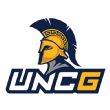
To pull off an upset, you need a player who can rise to close the talent gap higher seeds often enjoy. Meet Isaiah Miller. The Spartans are 5-3 when Miller scores 24 points or more this season. The guard is a real talent. Miller (2.6 SPG) is also an anchor for a Spartans squad that forced turnovers on more than one-fifth of its opponents’ possessions in Southern Conference action.

Javion Hamlet (15.0 PPG) is the spark for a North Texas team that has made 56% of its attempts inside the arc in Conference USA play. They’ve also made 37.3% of their 3-point attempts this season. But a defensive upgrade factored into this team’s run to the Conference USA crown. All four C-USA opponents the Mean Green faced in the league’s tournament failed to score more than 57 points against them. The Mean Green also held NBA prospect Charles Bassey to a 3-for-12 mark in their conference tournament championship victory over Western Kentucky.
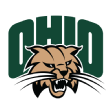
Jason Preston’s emergence has been the catalyst for the success this Ohio team has had in Jeff Boals’ second season. With Preston on the floor, the Bobcats have made 58% of their shots inside the arc. Preston (16.6 PPG, 6.8 RPG, 7.2 APG, 1.6 SPG, 41% from the 3-point line), a 6-4 guard with legit NBA dreams, is one of five players on this Ohio team averaging double figures. The Bobcats lost at Illinois by two points in November. It also put up 101 points on Cleveland State, the Horizon League champion. Ohio is dangerous.
14-seeds
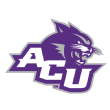
Just seven years into its return to the Division I ranks, the Wildcats beat Nicholls State 79-45 to win a Southland Conference title and reach the NCAA tournament Saturday. Doesn’t matter who they play, Joe Golding’s crew won’t back down. The Wildcats made 61% of their shots inside the arc in a 13-point loss to Arkansas and forced 16 turnovers in a seven-point loss to Texas Tech earlier this season. They’ve led the nation with a Press Virginia-like turnover rate: ACU opponents have committed turnovers 27 times for every 100 trips up the floor. The Wildcats have 7-footer Kolton Kohl (12.3 PPG) in the paint and made 38% of their 3-pointers in league play. First-round upset potential? Yes.

While this is Colgate’s second consecutive trip to the NCAA tournament, it’s only its second appearance since 1996. The Raiders finished the season 14-1 after capturing the Patriot League tournament title with a win over Loyola (Maryland) on Sunday. Jordan Burns (17.1 PPG) is one of four players on the roster who have made at least 35% of their 3-point attempts this season. The Raiders are also the only team in the Patriot League ranked in the top 100 in adjusted offensive efficiency at KenPom (they’re 58th). They made 38% of their 3-point attempts in league action.

After a 3-6 start, Eastern Washington has gone 13-1 since Jan. 21. Tanner Groves, a 6-9 center, has averaged 16.4 PPG, 8.1 RPG and 1.0 BPG. He has also improved as a shooter, connecting on 36% of his 3-point attempts in Big Sky action. It will be important for head coach Shantay Legans’ squad to keep Groves on the floor. He has fouled out in four games this season. Why does that matter? The Eagles have made 57% of their shots with Groves on the floor and 48% without him, per hooplens.com.
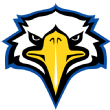
Fourth-year coach Preston Spradlin led his team to an 86-71 upset over Belmont in the Ohio Valley Conference tournament title game, extending the momentum the team has acquired. The Eagles have lost just one game since Dec. 21. They’re led by Johni Broome (27 points, 12 rebounds, 2 blocks in the tournament title game), a 6-10 freshman who has made 64.2% of his shots at the rim (hoop-math.com).
15-seeds

Dennis Gates, the Horizon League Coach of the Year for the second year in a row, has leaned on Tre Gomillion, the conference’s Defensive Player of the Year, to anchor a team that forced turnovers against its Horizon League foes about once every five trips up the floor, while also holding them to a 30% clip from the 3-point line, both top marks in the league.

Bryce Drew figured a move from Valparaiso to Vanderbilt was the next step for his career, but he finished 21-43 in his final two seasons before he was dismissed. After a year in TV, he accepted the Grand Canyon gig this year and didn’t waste any time leaving his mark. The Antelopes were the Western Athletic Conference’s No. 1 defensive team. Drew relied on Denmark native Asbjorn Midtgaard, a 7-foot Wichita State transfer, to ensure that efficiency. He has averaged 14.0 PPG, 9.9 RPG and 1.3 BPG this season.

If you had “Rick Pitino returns to the NCAA tournament” as a storyline entering the season, you should probably buy a lottery ticket. In a season that can’t be compared to any other, the former Louisville and Kentucky coach led Iona to a MAAC crown with a 60-51 win over Fairfield on Saturday. Few teams were hit by the COVID-19 challenges that Iona — which ended its regular season early last month — endured. But Isaiah Ross (18.4 PPG, 39% from the 3-point line) is the cornerstone of an Iona team that led the league in offensive efficiency — despite also leading the conference in offensive turnover rate. Pitino joins Lon Kruger and Tubby Smith as the only three coaches to lead five different programs to the NCAA tournament.

His name is Max Abmas. He’s the No. 1 scorer in America at 24.2 PPG. Think those are mid-major numbers? Well, he put up 18 points against Missouri, 28 points against Wichita State and 33 points against Oklahoma State this year, too. He’s the guiding light for an Oral Roberts team that completed a five-game winning streak with an upset over North Dakota State in the Summit League title game. The Eagles can shoot (39% from the 3-point line) and Abmas is built for this moment.
16-seeds

Appalachian State Mountaineers
When Dustin Kerns’ squad was 13-11 overall and 7-8 in league play at the end of the regular season, a conference tournament championship seemed unlikely. But March doesn’t always make sense. Standout Michael Almonacy averaged 21.7 PPG and went 20-for-39 from 3 as the Mountaineers rallied to win the Sun Belt tournament championship, knocking off top seeds Georgia State and Texas State.

T.J. Bickerstaff, the grandson of former NBA head coach Bernie Bickerstaff and the nephew of Cleveland Cavaliers head coach J.B. Bickerstaff, is one of four players on this roster averaging double figures. Gotta keep a hand in the Dragons’ faces whenever they’re on the perimeter — the CAA champs have made 41 of their 79 3-point attempts (52%) during a current four-game winning streak.

On Saturday, an energized John Gallagher essentially cut a wrestling promo on ESPN Radio after leading his team to an America East Conference tournament championship and its first NCAA tournament appearance. He said his team’s strength is its tenacity. “We are shockingly physical,” Gallagher said. The numbers back that claim. No America East team forced more turnovers per possession than Gallagher’s crew. The Hawks are led by 6-4 guard Austin Williams, who has averaged 19.6 PPG during his team’s five-game winning streak.

Mount Saint Mary’s Mountaineers
The Mountaineers’ best chance to pull off an upset? Protecting the rim the way they did throughout the season. Opponents made just 39.7% of their shots when the Mount played man, per Synergy Sports data. And anything seems possible with star Damian Chong Qui (15.1 PPG, 5.5 APG, 4.2 RPG), whose mother was murdered when he was 4 years old and whose father was paralyzed in a shooting, on the floor. His talent and perseverance carried this team to the Northeast Conference tournament title.

Norfolk State returns to the NCAA tournament for the first time since 2012, when it upset 2-seed Missouri in the first round. That version of the squad was ranked slightly higher by KenPom (183rd versus 200th), but this team has made 37.4% of its attempts from the 3-point line versus 31.5% for the 2011-12 group. Still, the 2011-12 team had Kyle O’Quinn, who played eight seasons in the NBA. But Devante Carter, the team’s top scorer this season, is averaging 15.5 PPG — almost identical to Quinn’s output (15.9 PPG) nine years ago.

Johnny Jones has lived a few lives in his coaching career. He has had the awkward experience of an interim role at Memphis, success at North Texas, the feeling of falling short of expectations with Ben Simmons on his roster at LSU and fresh excitement at Texas Southern, which has lost just one of its past 15 games. Seven of those victories include double-digit margins for the Southwestern Athletic Conference tournament champion. Michael Weathers (16.5 PPG, 5.2 RPG, 3.6 APG, 2.2 SPG) is a 6-3 guard who finished with 13 points in a nonconference loss to Oklahoma State, his former school.




